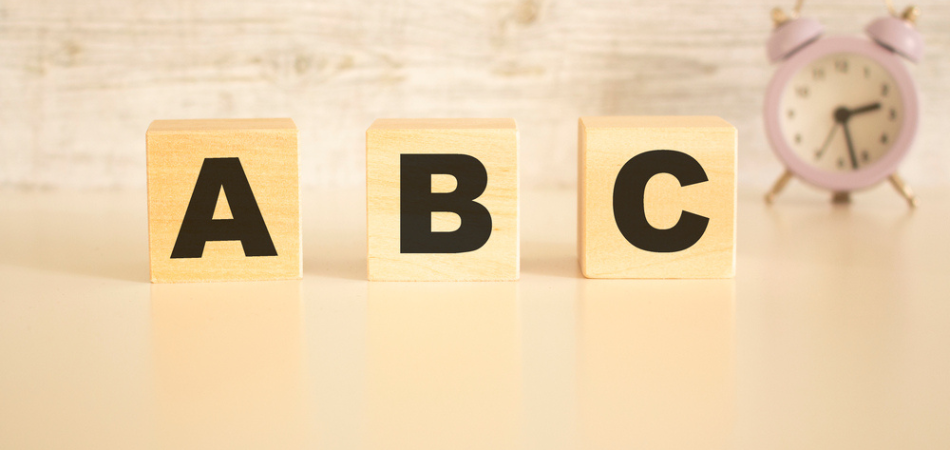The ABC Model was developed by Albert Ellis in 1955. Initially, Ellis developed this theory to explain how specific thought patterns link to the development of depression or stress. This theory explains that ways of thinking are created in a three-step process. Typically, this model is used in the context of treatment-resistant depression and anxiety and focuses on teaching clients ‘the relationship between thinking and emotional and behavioural reactions.’ Since its initial development, the ABC model has been adopted by a range of different therapeutic approaches. It has also expanded its focus and is now used by clinicians to help individuals in active addiction treatment. But how can this model be applied in addiction rehab? What can you expect of the application of ABC in a rehab centre, and what does this look like?
What is the ABC model?
ABC stands for:
- Antecedents
- Beliefs
- Consequences
In theory, ABC aims to help individuals to challenge ‘irrational thoughts.’ This functions on the understanding that thought processes can typically be learnt or ingrained. When we think, we can often think in ways that reinforce negative beliefs or behaviours. This can create a vicious cycle where our difficult thoughts begin to grow larger and spiral out of our control. By objectively analysing our thoughts, the intention is that we can take a step back and distance ourselves from them. This can then make the thoughts feel less powerful. And when they feel less powerful, we can begin to question them. This questioning can lead to us being able to make positive changes in the ways that we think, feel and react to specific situations in our daily lives. But for this to happen, we need to start to understand our thoughts a little better.
We can do this by analysing the ABCs (the antecedents, beliefs and consequences) of our thought patterns.
Antecedents
Antecedents are ‘the contexts or events that occur immediately before the challenging behaviour.’ Another word for this could be triggers or cues. These can take many different shapes and will vary from person to person. Examples of antecedents include specific:
- Places or people
- Times of the day / week / year
- Activities
In the context of addiction help, we might identify the following potential situational antecedents:
- Spending time in drinking-related settings (such as pubs, bars, clubs or restaurants)
- Spending time with previous drinking partners (or with people who are drinking)
- Late evenings or sunny afternoons (a time we may have previously had related to drinking)
All of these cues could catalyse the urge to drink. But cues are not always situational. They can also be personal. Personal antecedents include:
- Periods of emotional distress
- High stress at work or school
- Conflict in relationships
- Bereavement
- Financial issues
- Periods of depression
Any of these situations can catalyse a return to difficult thought patterns, which can lead to engaging in potentially harmful behaviours.
Beliefs
The B in ABC stands for beliefs and aims to challenge specific deep-set understandings we hold that can sometimes be ‘distorted.’ When talking about beliefs, we need to consider the role of:
- Cognitive distortions
- Irrational beliefs
- Negative self-perceptions
Harvard Medical School defines cognitive distortions as ‘internal mental filters or biases that increase our misery, fuel our anxiety, and make us feel bad about ourselves.’ We often have specific patterns of thought. For example, some people may experience ‘catastrophising’, which means that they consistently worry that the worse outcome will occur. Others may experience negative bias, which is when we see situations through a stormy filter and only seem able to identify the negatives whilst glazing over the positives. These types of thinking are often deep-set and ‘irrational’, meaning that they are often not accurate depictions of a certain situation. These types of thinking are lined with high levels of anxiety and stress.
Consequences
The final element of ABC is consequences. This considers the short and long-term effects of our patterns of thinking (and the ways we respond to them). These consequences are often more harmful than not. The goal of the ABC model is to allow individuals to understand their thought processes by working through their typical ABC patterns. This allows them to challenge their thoughts and, therefore, work towards replacing difficult consequences with more positive ones. Typical consequences of sitting with negative thought patterns in active addiction can include:
- Relapse
- Bingeing
- Leaving rehabilitation centres
- Social withdrawal
- Increased anxiety and depression
- Feeling you have ‘failed’
- Engagement in replacement maladaptive behaviour
- Suicidal thoughts or behaviours

How is the ABC model used in addiction counselling?
A type of ABC model can be applied in specific psychotherapies, such as cognitive behavioural therapy (CBT) and dialectical behavioural therapy (DBT). However, the ABC model is also used across rehabilitation clinics. This can be achieved in 1-1 therapy, when a clinician may ask you to talk through situations that lead to use. This may mean discussing:
- Specific situations that have previously led you to use
- The thoughts you have at this moment
- What do you feel emotionally
- What you feel in your body
- How you typically respond in this situation
Working through this can allow you to consider how you may be able to respond differently in the future. By understanding your thought patterns and identifying safer replacement behaviours, the ABC model can form part of a powerful toolkit of coping strategies to help you break away from the cycles of substance use.
(Click here to see works cited)
- https://www.ncbi.nlm.nih.gov/pmc/articles/PMC7351148/
- https://pubmed.ncbi.nlm.nih.gov/10672104/
- https://cdn.vanderbilt.edu/vu-web/lab-wpcontent/sites/96/2020/02/06141842/ABC-Data-Collection.pdf
- https://www.ncbi.nlm.nih.gov/books/NBK551500/
- https://www.health.harvard.edu/blog/how-to-recognize-and-tame-your-cognitive-distortions-202205042738#:~:text=Cognitive%20distortions%20are%20internal%20mental,continually%20processing%20lots%20of%20information
- https://www.ncbi.nlm.nih.gov/pmc/articles/PMC6097108/
- https://www.ncbi.nlm.nih.gov/pmc/articles/PMC6097108/






